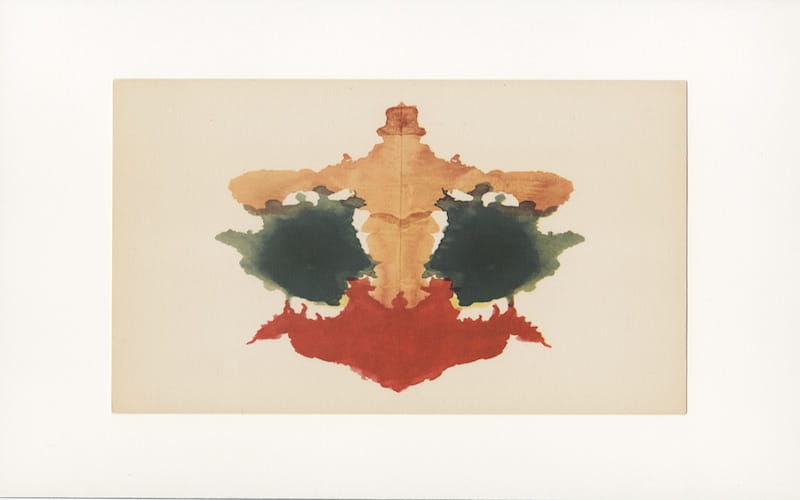‘What Might This Be?’ The Art and Science of Rorschach Inkblots Opens at Drexel

“What might this be?” Is an innocent question, and one that Hermann Rorschach asked of a series of inkblots he developed, in hope of diving further into the inner workings of the human mind in the 1920s. Rorschach combined two of his passions, graphic arts and the science of medicine, as a catalyst for inquiry into the psyche – and in this process, he also created art.
The Leonard Pearlstein Gallery of Drexel University’s Westphal College of Media Arts & Design will open, “What Might this Be?” The Art & Science of Rorschach Inkblots, on Tuesday, Oct. 8 from 5 p.m. – 6:30 p.m. The exhibition will run from Tuesday, Oct. 8 through Sunday, Dec. 8.
The exhibition will examine the link between inkblot art and inkblot science by looking at their history in psychology and relevancy in art. Inkblots fascinate not only because of their ambiguity, but also because of the inherent tension between their symmetry and asymmetry. This in turn creates the potential for accidental perceptions that are unique to the observer. Many well-known artists have experimented with inkblot art including, Andy Warhol, Salvador Dali, Leonardo da Vinci, Victor Hugo and Sandro Botticelli.

“Inkblots are perhaps psychology’s most popular and controversial creation. They have become a cultural icon that almost everyone has heard about,” said co-curator Eric A. Zillmer, PsyD, who is the director of Drexel’s Athletics Department and a Carl R. Pacifico professor of Neuropsychology in the College of Arts and Science. “While early, unpublished Rorschachs are the centerpieces to the exhibit, we also explore their role in psychology and art. Rorschach’s meticulously detailed inkblots were, in my opinion, technically and aesthetically perfect. They are deserving to be exhibited in an art gallery to showcase the relationship between art and its potential to reveal our inner psyche.”
On display will be unpublished and rarely seen Rorschach inkblots, as well as inkblots by other psychologists, all from Zillmer’s collection – reproduced in large-scale format to facilitate the observer’s relationship to the inkblot. Visitors will also have the opportunity to learn about the Rorschach process, review responses from Zillmer’s clinical cases and submit their own public response to an inkblot.

Rorschach died at the early age of 37 in 1922, at the height of the procedure’s uncertainty. Unknowingly to Rorschach, inkblot art would continue to take off culturally and even politically. In 1984, Andy Warhol would display his own Rorschach inkblots – and musician Gnarls Barkley went on to release “Crazy” in 2006 with a Rorschach themed music video. Former President Barack Obama declared in 2008, that he was “like a Rorschach test,” which was followed by Jared Kushner in 2016 who declared his father-in-law Donald Trump, to be like a “Rorschach test!”
“As a professional graphic designer, the inkblots’ inherent symmetry and ambiguity are very intriguing to me,” said co-curator Kanya Zillmer. “The inkblots displayed in the exhibit are ultimately not only very beautiful, but also complex, interesting, surprising, perplexing, and unbelievably creative. I am fascinated by the fact that Herman Rorschach had aspirations to be a graphic designer and that his calculated use of symmetry and ambiguity in his images open the door for accidental perceptions.”
Over the course of the 20th century, Hermann Rorschach’s inkblots developed into the most used psychological assessment procedure, along with the Wechsler Intelligence scales and the Minnesota Multiphasic Personality Inventory (MMPI), and then further into their super-sized role in popular culture. Eric Zillmer, a licensed psychologist and international author of many publications on psychology, and Kanya Zillmer, a graphic artist, propose that for the procedure to have gained such popularity in both psychology and in popular culture, the inkblots had to function like works of art themselves.
The Leonard Pearlstein Gallery is open to the public Tuesday through Sunday 11 a.m. – 5 p.m. in the URBN Annex (3401 Filbert Street).
Drexel News is produced by
University Marketing and Communications.